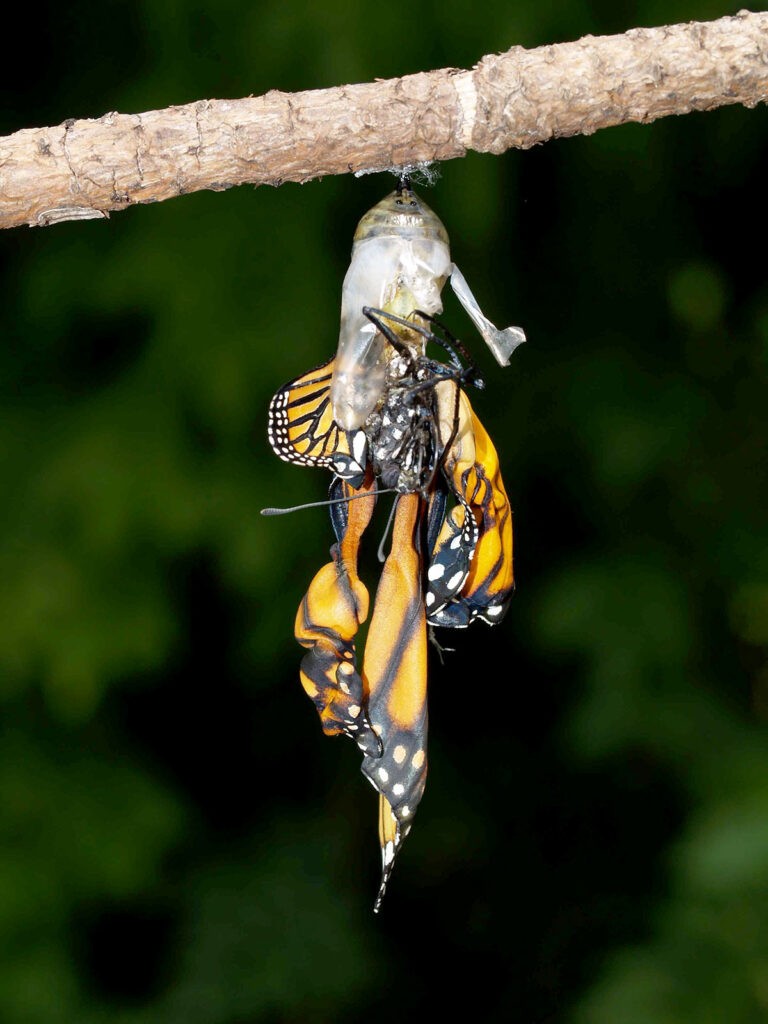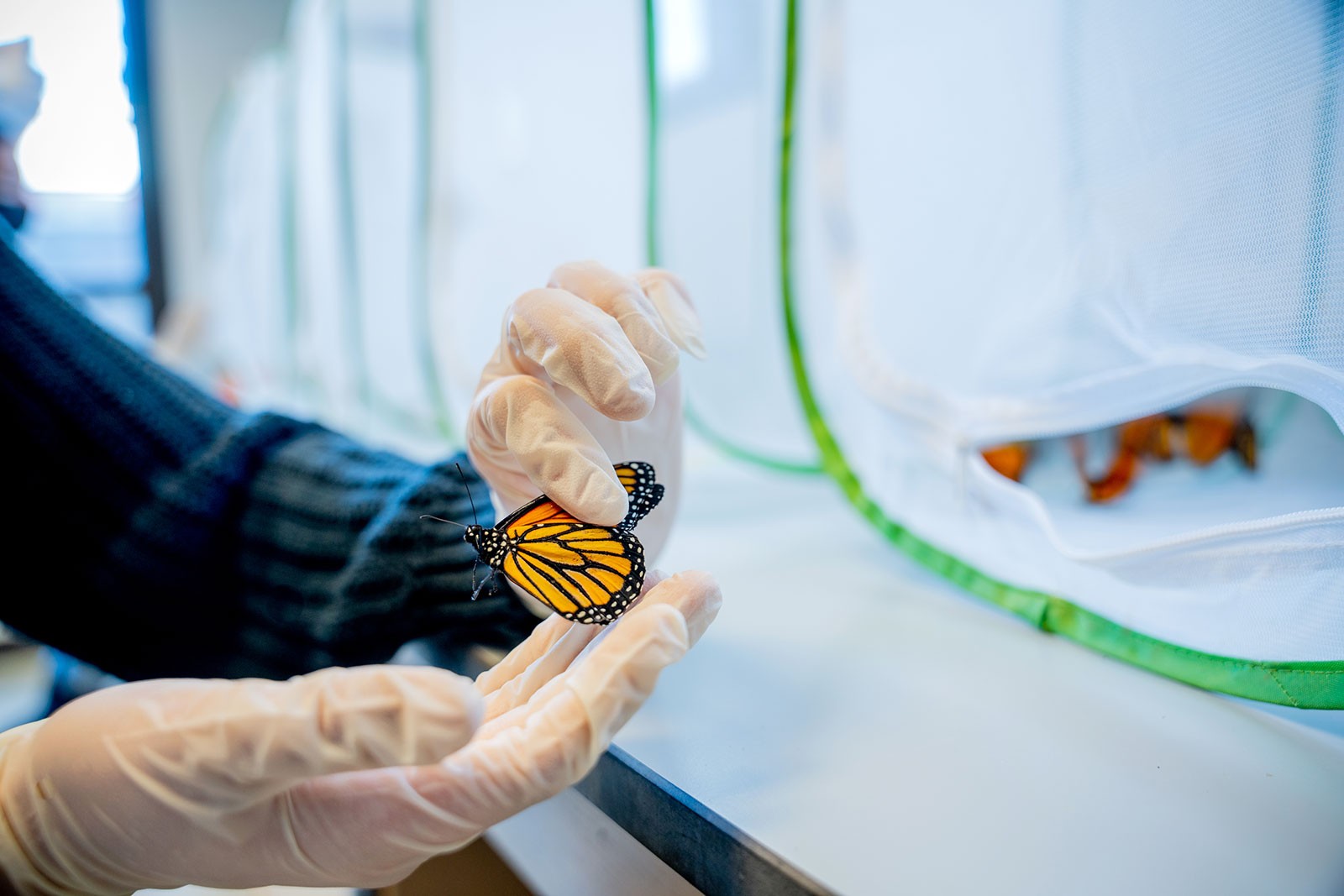Monarch butterflies in North America are plagued by a debilitating protozoan parasite. A new study from University of Georgia ecologists showed that constant exposure to high temperatures severely limits parasite development and also lowers monarch survival. The findings, published in Proceedings of the Royal Society Series B, have implications for predicting the future distribution and impacts of disease in these iconic insects.
The researchers experimentally infected monarch caterpillars with the protozoan Ophryocystis elektroscirrha (OE), raised them under a range of temperatures, and measured parasite infection and monarch survival. The results showed that parasite infection was high across low-to-moderate temperatures—but that parasites failed to develop at the hottest temperature (34 degrees Celsius).
“We were shocked to see such an abrupt thermal threshold for parasite development—not a single monarch became infected under the hottest temperature treatment,” said lead author Isabella Ragonese, a doctoral student at the Odum School of Ecology.
Environmental temperatures are increasing across the globe, with further warming predicted in the future. For temperature-sensitive ectotherms like monarchs, larval development rate, immune function, survival and movement all depend on environmental temperature. Parasite persistence in the environment and within-host development also depend on temperature.
The OE parasite invades the gut of the monarch caterpillars when they eat dormant spores on milkweed leaves. Past work showed that because the parasite spends part of its life cycle lying dormant in the environment, high temperatures can weaken spore survival before the parasites enter a host. This new study showed that hot temperatures further reduce the parasite’s ability to infect and replicate once they are inside their butterfly hosts.
Importantly, the lack of infection at 34 C was not due to greater host immunity or faster host development. Instead, this phenomenon could reflect the thermal limits of parasite invasion and within-host OE replication inside monarchs.

Monarch survival also fell sharply at the hottest temperature. Monarchs raised at 34 C were smaller, experienced wing deformities, and lived shorter as adults. Overall, the benefits to monarchs from escaping infection under high temperatures are probably outweighed by the costs of extreme heat for the butterfly’s own development and survival.
“If butterflies and parasites find themselves in habitats with prolonged heat waves, both players are going to suffer,” said senior author Sonia Altizer, Martha Odum Distinguished Professor of Ecology. “A warmer world could mean less parasite infection for monarchs, but won’t necessarily produce healthier butterflies.”
The study’s results indicate that extreme heat associated with ongoing climate change could negatively impact both species in warmer parts of the monarch’s breeding range and during the hottest times of year. The exact mechanism by which heat limits parasite development is still unclear, and further research is needed to discover the answer. For example, in vector-borne protozoan parasites like malaria, early parasite development within insect vectors is known to be sensitive to high temperatures. For monarch parasites, rising temperatures could also affect the nutritional quality and chemical composition of their milkweed host plants, which can in turn influence parasite infection.

“Ultimately, we would like to predict how monarchs will fare in a warmer world, which will depend on many factors, including extreme weather, parasite infection, and the monarchs’ own migratory behavior,” said co-author Richard Hall, associate professor of ecology.
The study was also co-authored by Maya Sarkar, an undergraduate student at the University of Minnesota, and supported by a Research Experiences for Undergraduates (REU) site program grant from the National Science Foundation.
“Developing this project gave me insights into the scientific process from the inception of a question to interpretation and analysis of results,” said Sarkar, an alumnus of the Population Biology of Infectious Diseases REU program at UGA. “The surprising results of this experiment made me more excited about how the findings relate to butterfly conservation and environmental change.”
The research was supported by the National Science Foundation and the Strategic Environmental Research and Development Program of the Department of Defense, Environmental Protection Agency and Department of Energy.

